Family: Plantaginaceae Juss.
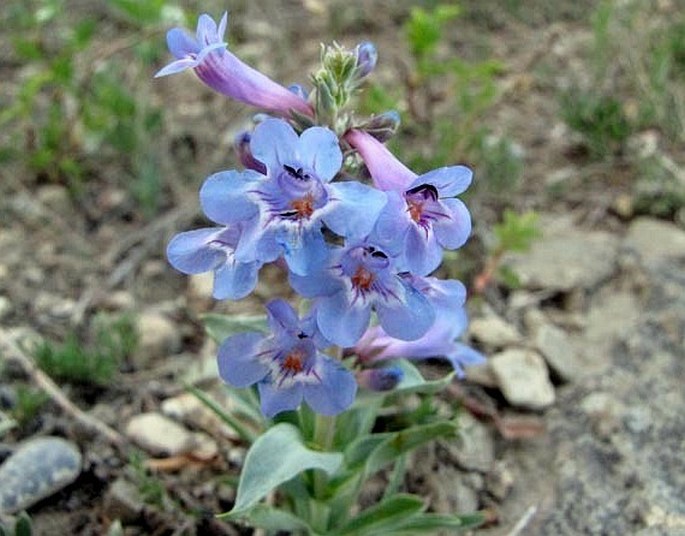
Distribution: North American species, found from southwest of Canada to northwest of US – in Canada from British Columbia to Manitoba and in US from Idaho and west of North Dakota to Wyoming and Colorado. In its range besides the nominate variety, the most common one, you can find P. n. var. polyphyllus in Idaho and Montana.
Ecology: Grows in mountain meadows, open areas and prairie grasslands. Blooms from May to June.

Description: Perennial herb, 10–30 cm tall, stout, hairless, often forming clumps. Leaves opposite, somewhat fleshy, greyish blue, petiolate, oblanceolate to ovoid, to 10 cm long, 2.5 cm wide, margins smooth, stem leaves mostly sessile or short petiolate, lanceolate, pointy tips, smaller than basal ones. Inflorescence a terminal panicle; bracts large, oval to lanceolate. Flowers blue to purplish, funnel shaped, irregular, 2-lipped, 1.5–2 cm long, sepals 5; petals 5; stamens 5 (4 fertile and 1 bearded staminode); pistil 1. Fruit is an ovoid capsule 9–12 mm long; seeds numerous, 3 mm.
Use: A decorative species used in rockeries in Europe as a perennial.
Note: The sterile stamen (staminode) is covered with hairs and gives the common name to all Penstemons as Beardtongues.
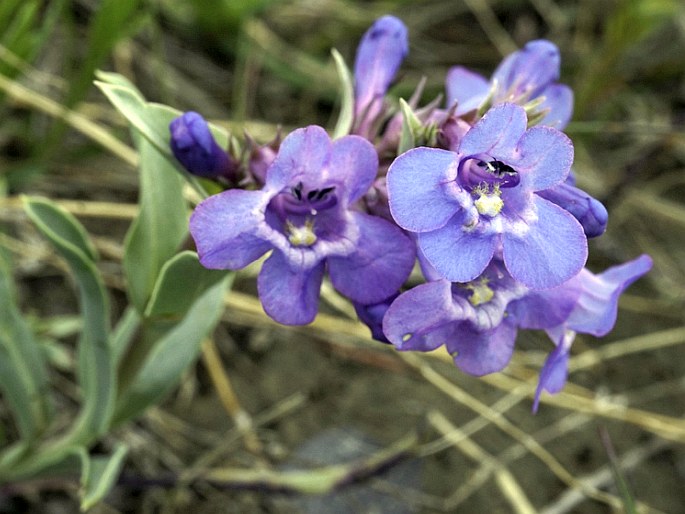
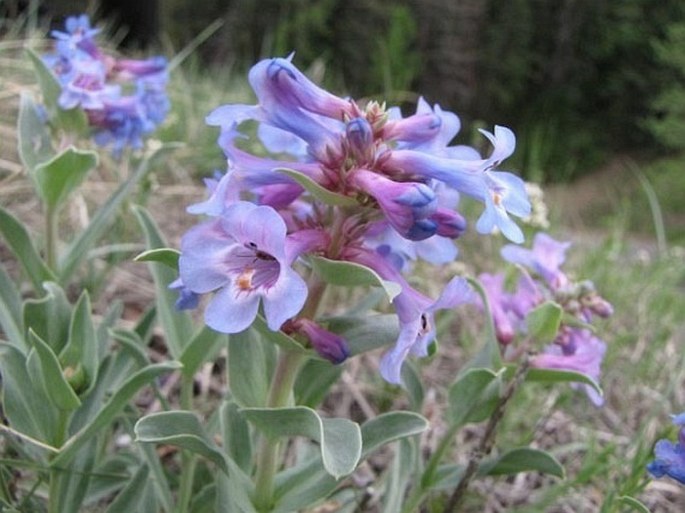
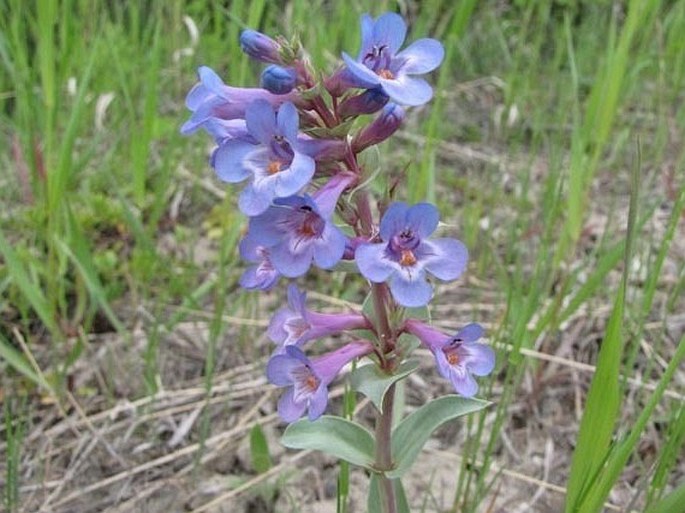

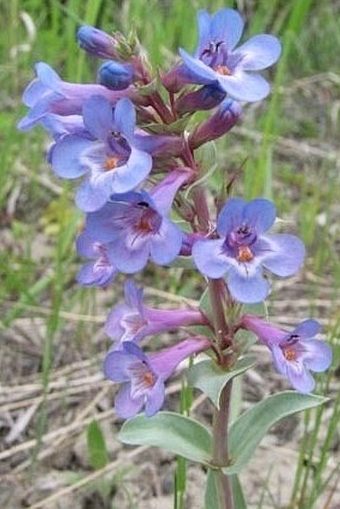
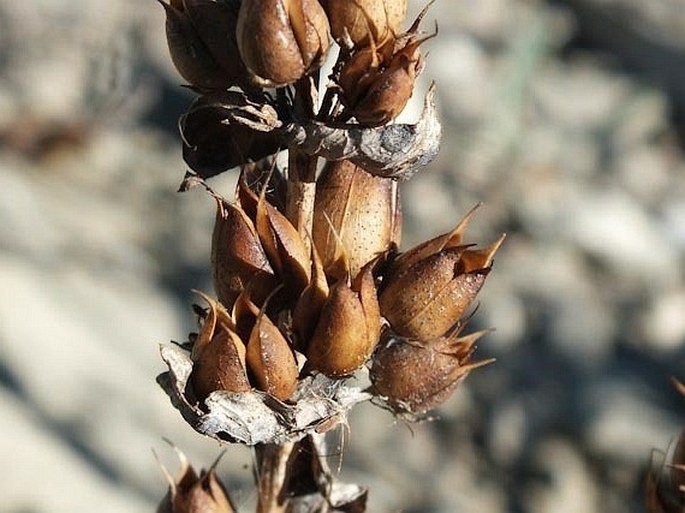
These images were taken in Canada, Alberta, Calgary, Confluence Park (20. 5. and 22. 9. 2013), Calgary, Edworthy Park (27. 5. 2013), Calgary, North Weaselhead Natural Environment Park (12. 6. 2013).


